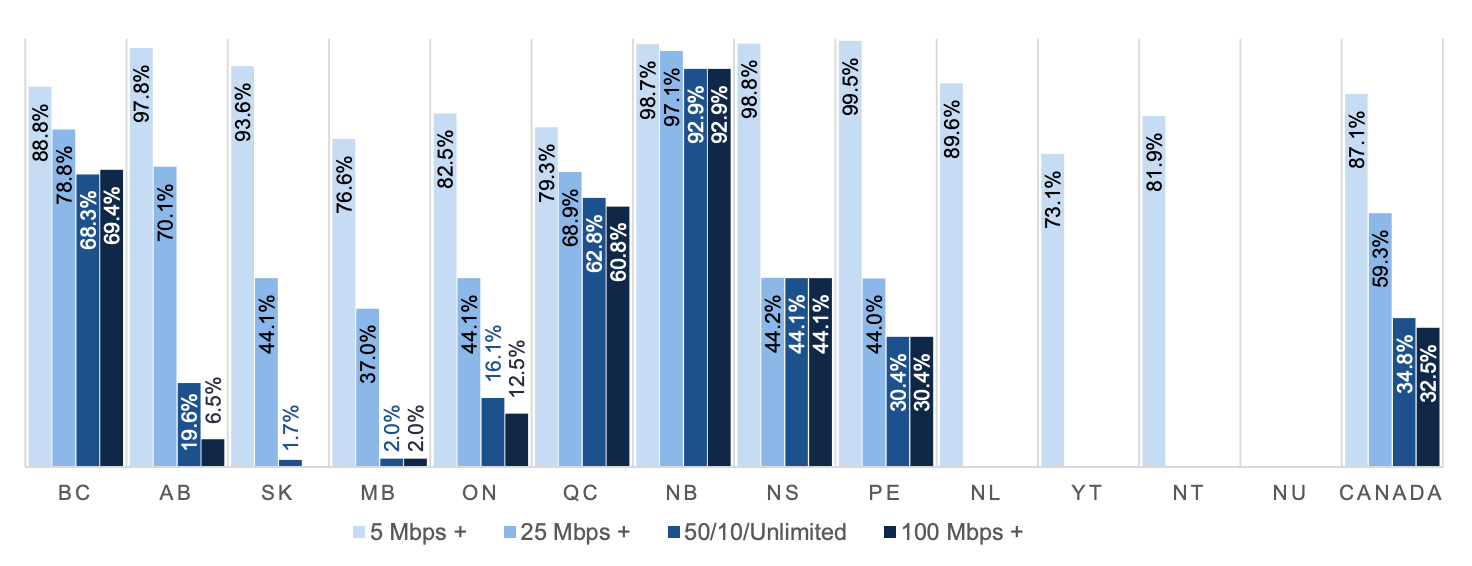Current Status
First Nations communities in Alberta offer varying degrees of broadband internet access to their residents. Different broadband strategies are being implemented to resolve this issue. While the Alberta SuperNet did roll out to all (or nearly all) schools in First Nations communities, the infrastructure was not always readily available for ISPs to use as backhaul. Several projects around the province have provided other solutions.
Despite this, Alberta’s First Nations communities have some of the lowest 50/10 Mbps accessibility numbers in the country, with only 19.6% of communities achieving speeds at that level (only four other provinces have less access to 50/10 Mbps speeds in First Nations communities).
Table 5. Prepared by Cybera using data from the 2020 CRTC Communications Monitoring Report111.
PROVINCE | FIRST NATIONS ACCESS TO 50/10 MBPS + UNLIMITED |
New Brunswick | 92.9 |
British Columbia | 68.3 |
Quebec | 62.8 |
Nova Scotia | 44.1 |
Prince Edward Island | 30.4 |
Alberta | 19.6 |
Ontario | 16.1 |
Manitoba | 2.0 |
Saskatchewan | 1.7 |
Newfoundland and Labrador | 0.0 |
Canada | 34.8 |
Overall availability of broadband to Canadian First Nations communities is shown in Figure 18. Alberta communities place high for availability of up to 25 Mbps, but are lower than average for faster bandwidth speeds. Last mile connectivity technologies are likely to be the issue for many of them, given backhaul availability issues via SuperNet or other providers.
Figure 18. First Nations reserve broadband service availability, by speed and province/territory (% of households), 2019112.
Remarkably, five out of the 80 First Nations communities in Alberta have less than 50% LTE mobile data service coverage, and 10 out of 80 are less than 100% covered113.
Federal First Nations Initiatives
The First Nations Technical Services Advisory Group
References
111CRTC. Communications Monitoring Report 2020, page 113.
112CRTC. Communications Monitoring Report 2020, page 110.
113CRTC. https://crtc.gc.ca/cartovista/BroadbandInReservesYE2019_EN/index.html. Accessed 11 March 2021.
